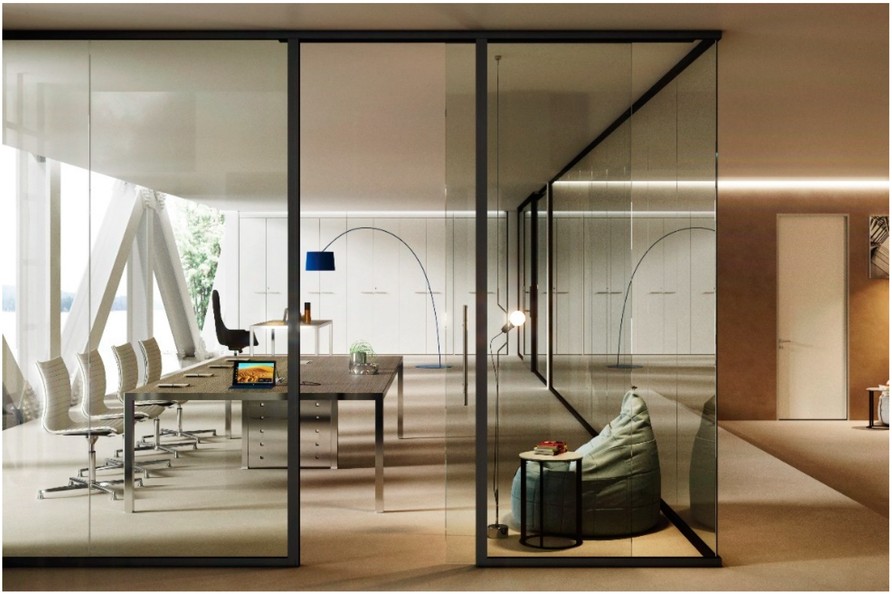
Moving on to sliding glass office systems. Modern workplace designs use them to introduce light, create flexible rooms, and appear elegant. Dynamic zones replace stuffy cubicles! While appearance is important, there’s much more to consider while choosing them. These are daily-use items. This means safety and performance are critical, not simply nice to haves. Choosing the incorrect system might cause inconvenience, noise, or accidents. What should you focus on beyond appearance? Let’s examine what makes a sliding glass system excellent to live with.
Critical Foundation: Anti-Slip Track Design
Let’s start with the track, which keeps that enormous piece of glass moving. Though you may assume all tracks are equal, they are not. Top-tier demountable sliding glass office systems have anti-slip or anti-derailment tracks. This means what in simple English? The rollers or guides are designed to firmly hold the door panel in the track, limiting the possibility of it jumping off. This function is essential for safety and smooth operation. A hefty glass door falling off its track might be disastrous, right? A well-designed track system ensures stability and predictability every time someone slides the door, preventing that stomach-dropping catastrophe. This strong door-path link is the quiet guardian of safety and the foundation of dependable functioning.
The Silent Technology Magic of Smooth Operator
Nobody loves a loud workplace. Clanging doors? Tracks grinding? This is bothersome and distracting. Silent technology improves the everyday user experience and workplace atmosphere quietly. High-quality sliding systems include soft-close mechanisms, sophisticated dampeners, and precision-engineered rollers built from friction- and noise-reducing materials. No more startling smashes when conference room doors are rapidly closed. Instead, the door slides smoothly and stops gently. This goes beyond remaining quiet, which is good for focus and professionalism.
Built to Last: Durable Construction Matters
Okay, you want these systems to pay out over years, not months. Durability involves several factors. The materials: tempered or laminated safety glass? This must be done to limit harm if the unlikely occurs and the glass fractures (shatters into little, less sharp fragments or stays stuck to a film). Next, examine the hardware and frame. Are they constructed of durable aluminum or stainless steel? Fragile frames and inexpensive rollers may distort and wear out rapidly, making the door sticky or unsafe. Durable materials and strong construction will withstand the repeated pushing, tugging, and sliding of office life, retaining performance and safety without regular modifications or repairs.
Integrating Daily Safety and Performance
Safety and performance in a sliding glass office system are intertwined, particularly in daily usage. Anti-slip tracks keep the door secure and aligned, which affects its performance. Silent technology reduces noise, prevents cramped fingers, and glides smoothly for easy high performance. Wear and tear may cause operational failures and severe malfunctions, yet durable design keeps the system safe and reliable for years. System evaluation should consider how well these parts are integrated. A superb system feels robust, glides gently, functions smoothly, and provides you piece of mind since it’s intended for user well-being and long-term functioning. Look behind the glass to the system’s bones.
Conclusion
Sliding glass systems are more than room separators when designing a contemporary office. They’re active aspects of the workplace. Prioritizing features like solid anti-slip tracks, advanced quiet operating technology, and lasting construction guarantees you’re implementing systems that are safe, dependable, and enjoyable to use every day. Looking for these aspects will pay off in decreased maintenance difficulties, a more productive environment, and most importantly, user safety. Ask challenging questions and examine engineering details. Your team will appreciate it.



